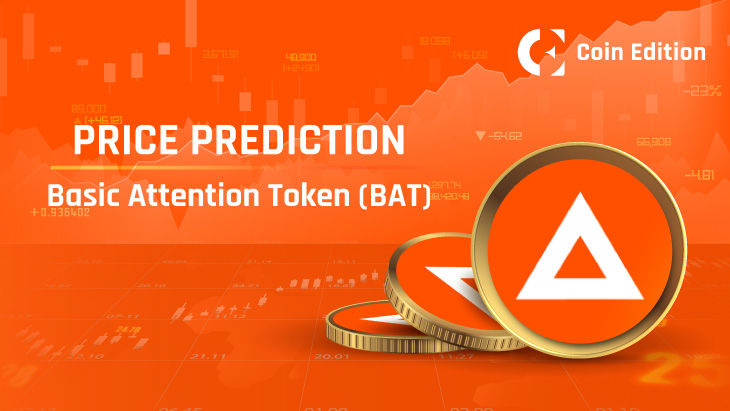The discussion surrounding inflation-linked stablecoins and their potential to mitigate volatility in the cryptocurrency market has garnered much attention in recent times. In this regard, Coin Edition had the honor of interviewing Robert Quartly-Janeiro, Chief Strategy Officer at Bitrue, a cryptocurrency exchange, based in Singapore.
Robert shared his insights on the subject of inflation-linked stablecoins, how they differ from other stablecoins, and how they can be effective as an inflation hedge.
Q: Inflation-linked stablecoins are a relatively new type of stablecoin in the market. Can you tell us what they are?
Inflation-linked stablecoins are, in many ways, the natural evolution of stablecoins. The concept behind them is to maintain the coin value in line with, for example, the Consumer Price Index (CPI). Fundamentally, they are about ensuring that the asset value doesn’t erode over time due to inflation as it does with fiat currencies such as the euro, dollar, etc.
How to achieve that inflation hedge is a more complicated question, but the goal remains: to provide a stable store of value over time against a specific index or economy.
Q: How do these inflation-linked stablecoins differ from other stablecoin types, such as fiat-backed or algorithmic ones?
Compared to other stablecoins, inflation-linked stablecoins are designed to offer a more stable and reliable store of value. While USDT, for instance, replicates the value of the US dollar based on the underlying value of USD — which people use as a peg to get into or out of trades — these new coins seek to go beyond that.
Inflation-linked stablecoins maintain a moving value over time by tracking changes in the inflation rate rather than matching a strike price for, say, the euro. Smart contracts are used to execute these adjustments automatically, without the need for human intervention.
Q: Inflation-linked stablecoins have gained increasing attention in the cryptocurrency market as a potential solution to inflation. How exactly can they address this issue?
This stablecoin type uses the inflation rate to adjust its supply and demand dynamics, which, in turn, affects its price. As the inflation rate increases, the supply of inflation-linked stablecoins will decrease, causing their price to rise in its simplest. Other options for inflation hedging are FX hedging or using real assets that beat inflation. However, these can be fairly illiquid.
Inflation-linked stablecoins effectively play on classic supply and demand factors, smart contracts (but I caution against the term), and other technologies to maintain their value.
If the issuers of inflation-linked stablecoins succeed, this new asset type will likely be superior to the others in terms of price stability and value preservation and benefit investors looking to protect their purchasing power against inflation. Those coins that achieve that will see higher demand, which will, in turn, help them meet their goal.
Q: Given the crypto’s historical volatility, what benefits do inflation-linked stablecoins offer investors? And how effective are they as an inflation hedge on the broader economy?
First, there’s no one-size-fits-all approach: inflation-linked stablecoins are not USDT 2.0. They are far more complicated, and they have to take action to become the benchmark index they are looking to become. There are many aspects here, including location: is an investor looking to beat CPI in Europe, the USA, Australia, Nigeria, Turkey, etc.? Each will have a different inflation rate and economic pressure.
For more dynamic inflation-linked stablecoins, real assets could form part of the return profile for those willing to play that investment strategy, so the two necessarily need to be separate, but complexity and risk come into that.
Where they could be particularly useful is hedging fiat currencies and economies in the way FX desks at investment banks seek to for clients but for retail investors.
Q: What are the potential drawbacks or risks associated with investing in inflation-linked stablecoins?
The drawbacks are the same ones as with other assets. In this case, it’s the risk of volatility, regulatory, and liquidity risks.
Additionally, inflation-linked stablecoins are still a relatively new asset class, so it will take time for them to be tested against the benchmarks they set. I’m also unsure of their ability to overcome a hyper-inflated environment. If they can handle these factors, though, then I believe they will be highly successful.
Q: What challenges do inflation-linked stablecoins face regarding usability and scalability?
First, they need to be widely adopted and used in day-to-day transactions to be effective and desirable. Second, their fluctuating supply and demand mean their rarity and increased circulation boost the price. Still, wider adoption encourages greater circulation — and that’s an issue if you want to maintain above-inflation pricing and stability.
Technically speaking, they need to be able to handle a high volume of transactions without slowing down or becoming unresponsive, and then there’s the matter of scalability. They are widely scalable but lend themselves more to heavily traded currencies and economies than smaller ones, and that’s before you start talking about the outlook of the dollar if the US were to default.
Q: Overall, how do you see this asset type evolving in the future?
Inflation-linked stablecoins are still a relatively new concept, but they have the potential to play a significant role in the cryptocurrency market. If they prove they work, then there will likely be a growing demand for stablecoins that offer protection against inflation as a simplistic investment strategy. Meanwhile, traditional cryptocurrencies provide less traditional, more volatile price action.
However, the success of inflation-linked stablecoins will depend on several factors. Those include regulatory acceptance, adoption by users and merchants, competition from other stablecoin models, and their ability to deliver what they promise. Intellectually speaking, it will be interesting to see how and where they develop, for example, what inflation rates they look to beat, the strategies they utilize, and, most importantly, how they perform.
Disclaimer: The information presented in this article is for informational and educational purposes only. The article does not constitute financial advice or advice of any kind. Coin Edition is not responsible for any losses incurred as a result of the utilization of content, products, or services mentioned. Readers are advised to exercise caution before taking any action related to the company.







